
Science News
Month in Space: January 2011
See a blazing launch, glittering galaxies and other cosmic highlights from January 2011.
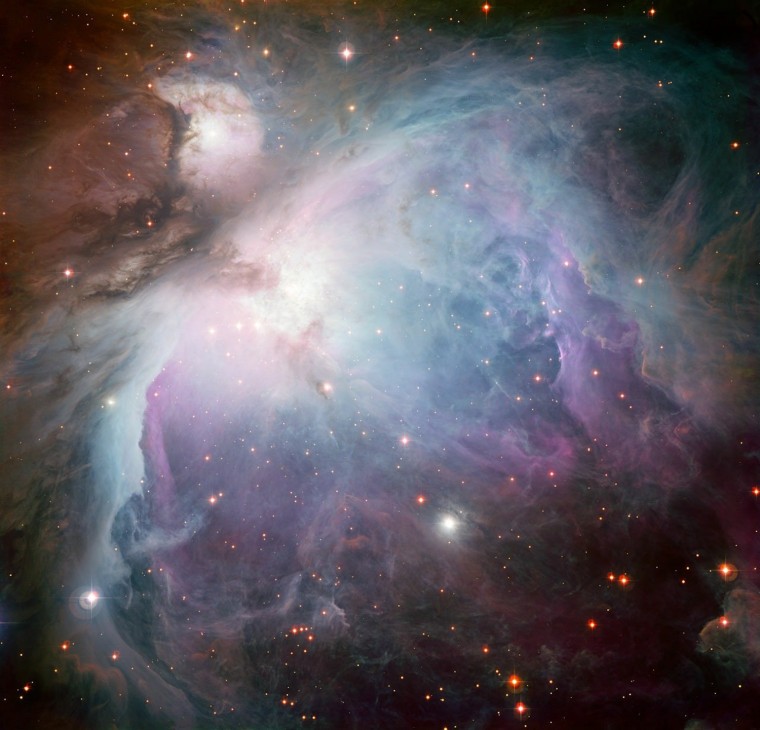
Oh my, Orion!
The Orion Nebula, just 1,350 light-years from Earth, glows in shades of blue and violet in an image captured by the MPG/ESO 2.2-meter telescope at the European Southern Observatory's La Silla facility in Chile. This view of the nebula, featured by the ESO on Jan. 19, offers astronomers a close-up view of a massive star-forming region in our celestial backyard. Infant stars are wrapped in the clouds of gas and dust.

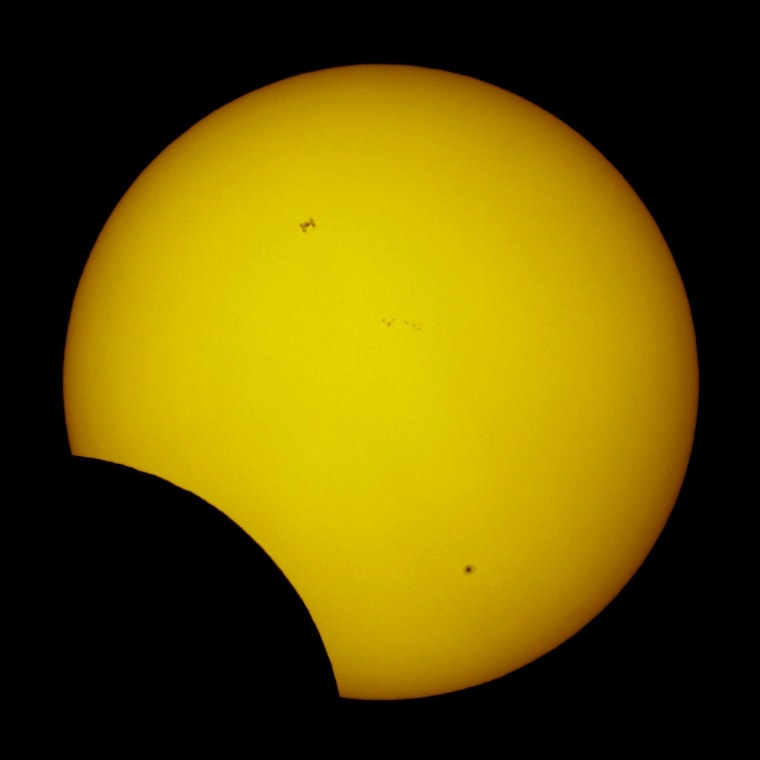
Three heavenly bodies
Astrophotographer Thierry Legault traveled to Oman to make sure he captured this image of the moon, the sun and the International Space Station during the Jan. 4 partial solar eclipse. The space station can be seen as a tiny shape passing over the sun's disk at upper left. The moon's disk, meanwhile, covers up the sun at lower left. Legault had to shoot the picture quickly because the Earth-orbiting space station moved across the sun's disk in just 0.86 seconds. The image also includes sunspots 1140 (bottom) and 1142 (center). The spots are generated by a solar activity cycle that should reach its maximum in the next two years.
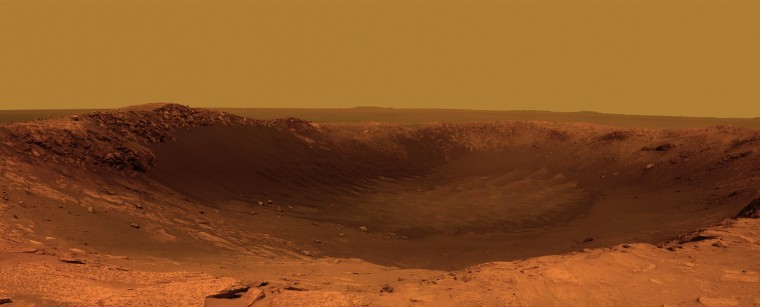
Seven years on Mars
This is a true-color panorama view of Santa Maria Crater on Mars, as seen by NASA's Opportunity rover. The rover team celebrated seven years of operation for Opportunity on Jan. 25 (Jan. 24 Pacific time). Opportunity's twin, Spirit, is stuck in a sandtrap on the other side of the Red Planet and may have fallen victim to the Martian winter. Opportunity, however, is still in good condition and on its way to an even bigger crater called Endeavour.
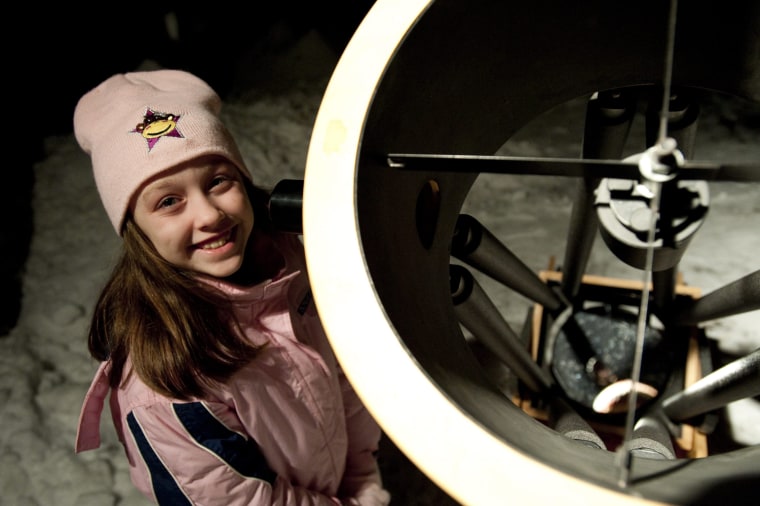
A super kid finds a supernova
Ten-year-old Kathryn Gray stands next to her father's telescope at the family's home in Birdton, New Brunswick, on Jan.3. Kathryn Gray is the youngest person to discover a supernova. The Royal Astronomical Society of Canada says she made the discovery over the New Year's weekend under the watch of her father and another astronomer.
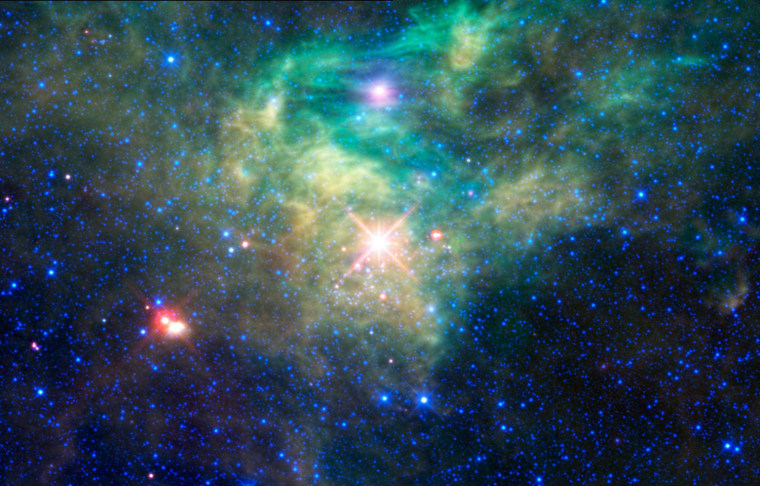
Cluster in Camelopardalis
This infrared image, captured by NASA's Wide-field Infrared Survey Explorer, shows a cluster of newborn stars enclosed in a cocoon of dust and gas in the constellation Camelopardalis. This is the constellation where 10-year-old Kathryn Aurora Gray spotted a supernova over New Year's weekend.
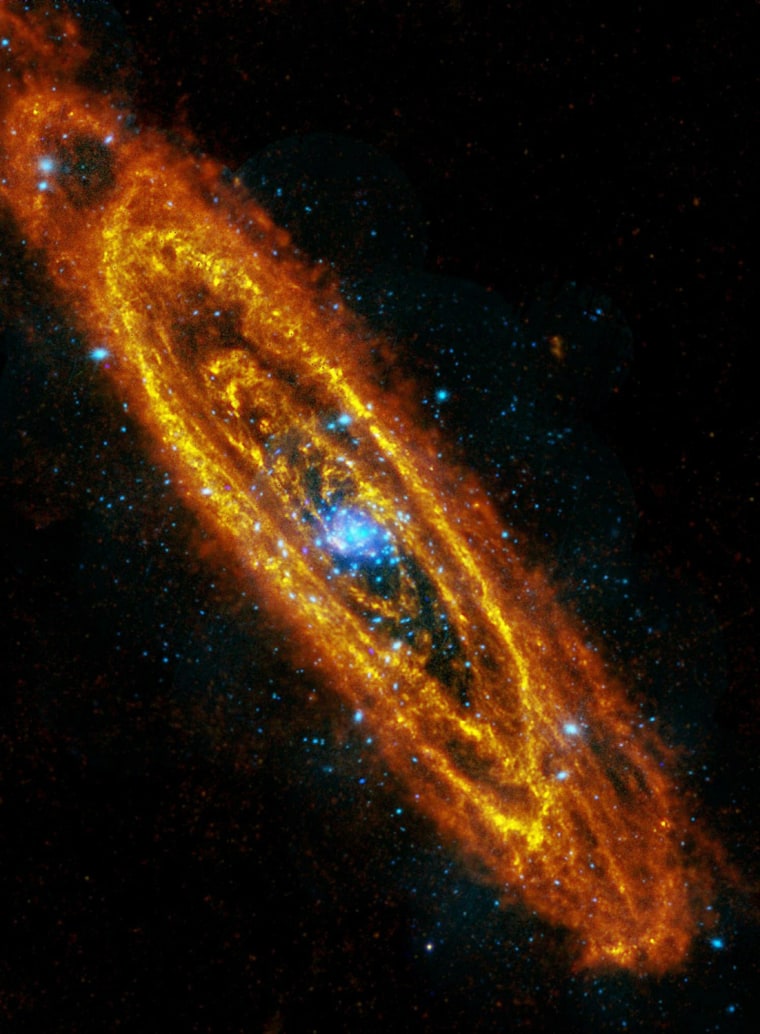
Andromeda in a new light
Two European space observatories teamed up to produce this image of the Andromeda Galaxy, which was released on Jan. 7. The Herschel space telescope focused on rings of star formation in infrared light, shown here in shades of red and orange. The XMM-Newton probe registered the X-ray emissions from exploding stars, shown here in blue.

Over the 'roof of the world'
This photograph, taken from the International Space Station on Jan. 6, highlights the northern approach to Mount Everest from Tibet (China). In this view, Everest's summit is just off the top edge of the image. Khumbutse mountain, visible at lower right, has a summit elevation of 6,640 meters (21,785 feet) above sea level.
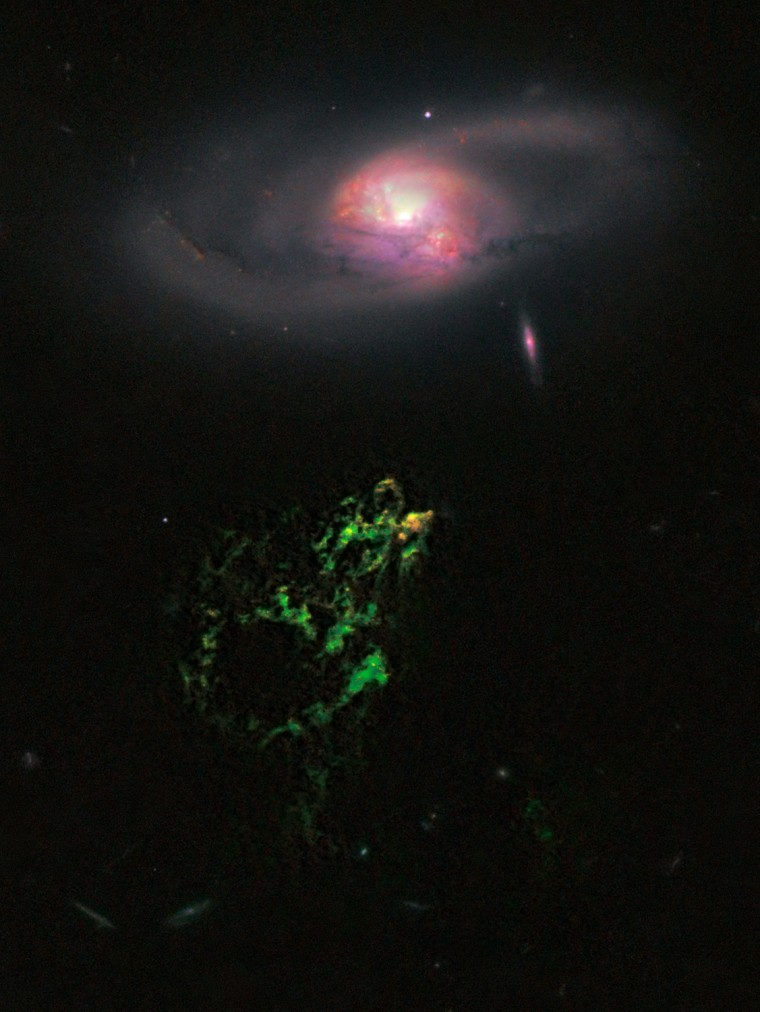
The green blob explained
This Hubble Space Telescope image, released Jan. 10, shows an unusual, ghostly green blob of gas that appears to float near a normal-looking spiral galaxy. The bizarre green object, dubbed Hanny's Voorwerp ("Hanny's Object" in Dutch), is the only visible part of a 300,000-light-year-long streamer of gas stretching around the galaxy, called IC 2497. The greenish Voorwerp is visible because a beam of light from the galaxy's core illuminated it. This beam came from a quasar, a bright, energetic object that is powered by a black hole. The quasar may have turned off about 200,000 years ago. The blob was discovered in 2007 by Dutch schoolteacher Hanny van Arkel, a participant in the Internet-based Galaxy Zoo project.
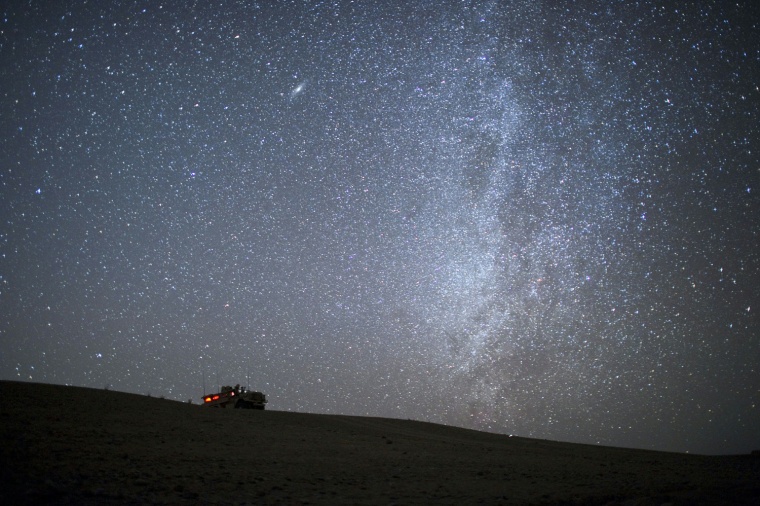
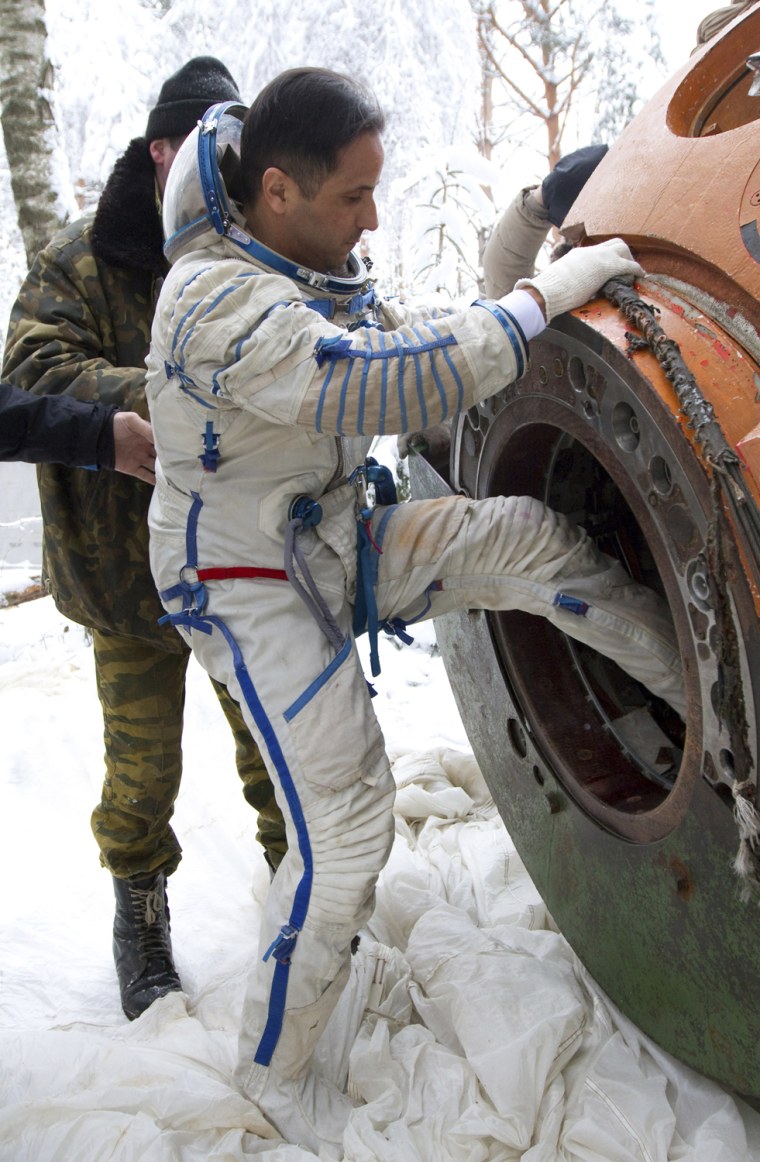
Learning to survive
NASA astronaut Joseph Acaba gets out of a landing capsule during a survival training course at Russia's Star City cosmonaut complex on Jan. 20. Acaba, an educator-astronaut of Puerto Rican heritage, flew to the International Space Station on the shuttle Discovery in 2009.

That's heavy, dude
An unmanned Boeing Delta 4 Heavy rocket rises from its launch pad at Vandenberg Air Force Base in California on Jan. 27. The heavy-lift launch vehicle sent a spy satellite into orbit for the National Reconnaissance Office. This was the largest rocket ever launched from the West Coast.
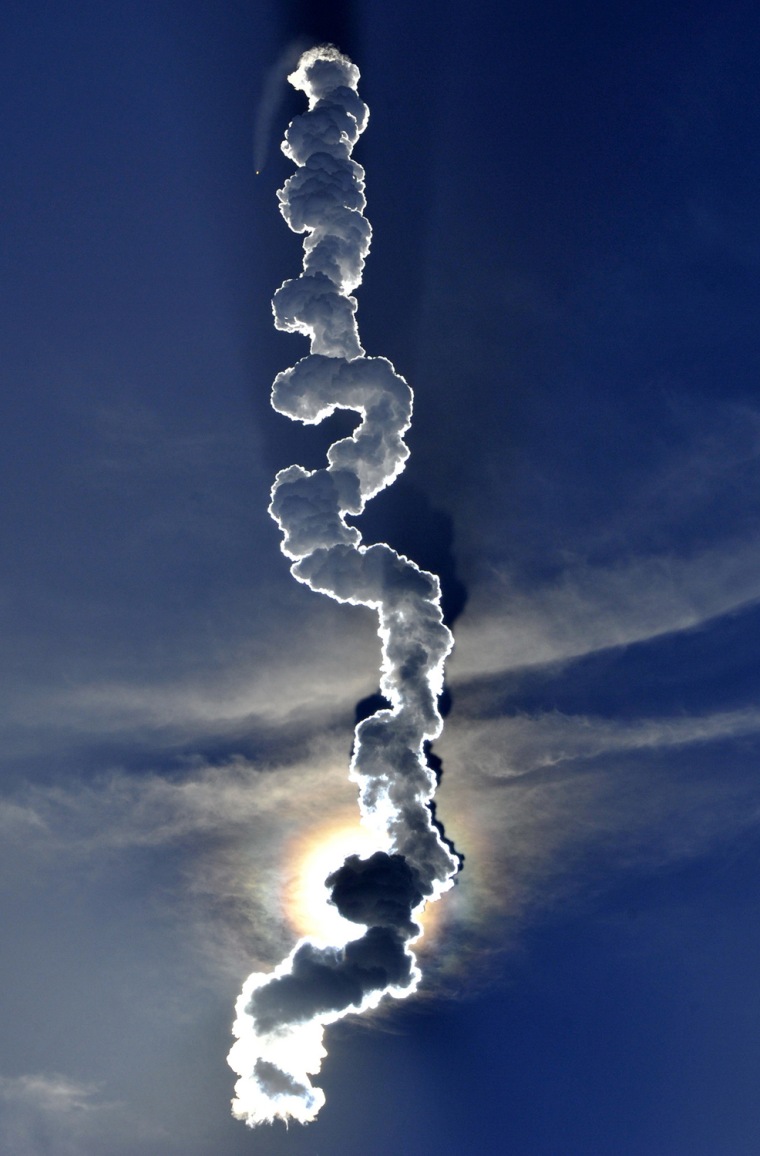
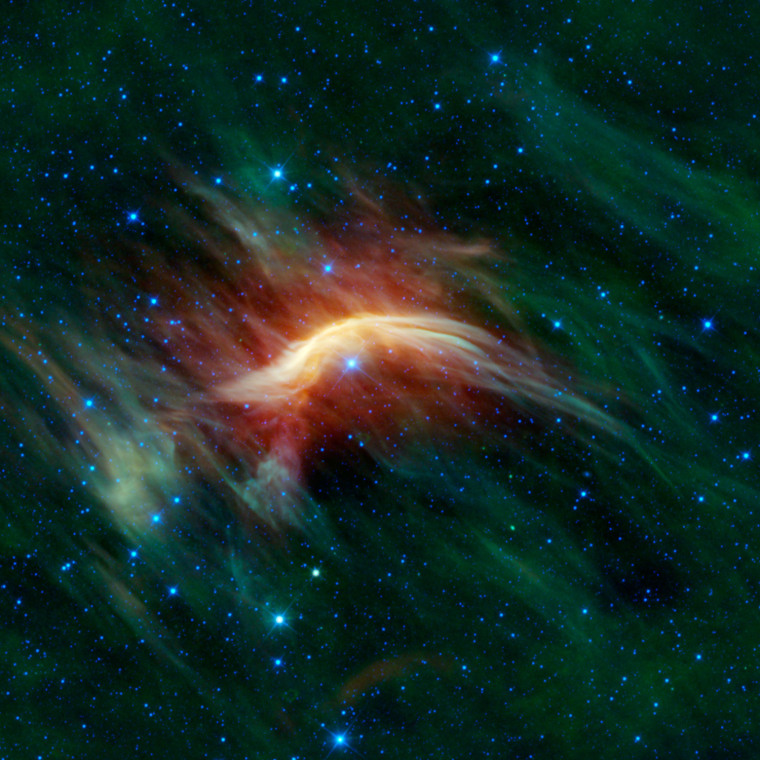
Shocking star
The blue star near the center of this image, released on Jan. 24, is called Zeta Ophiuchi. When seen in visible light, it looks like a relatively dim red star, surrounded by other dim stars with no dust to be seen. However, in this infrared image taken by NASA's Wide-field Infrared Survey Explorer, or WISE, a completely different view emerges. Zeta Ophiuchi is actually a very massive, hot, bright blue star plowing its way through a large cloud of interstellar dust and gas. The star's motion through the cloud creates the yellowish "bow shock," which is analogous to the wave created by the bow of a boat as it plows through water.
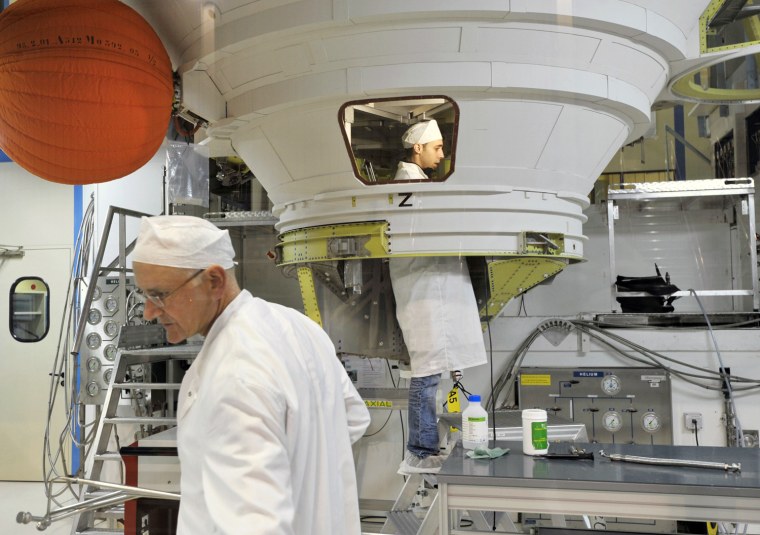
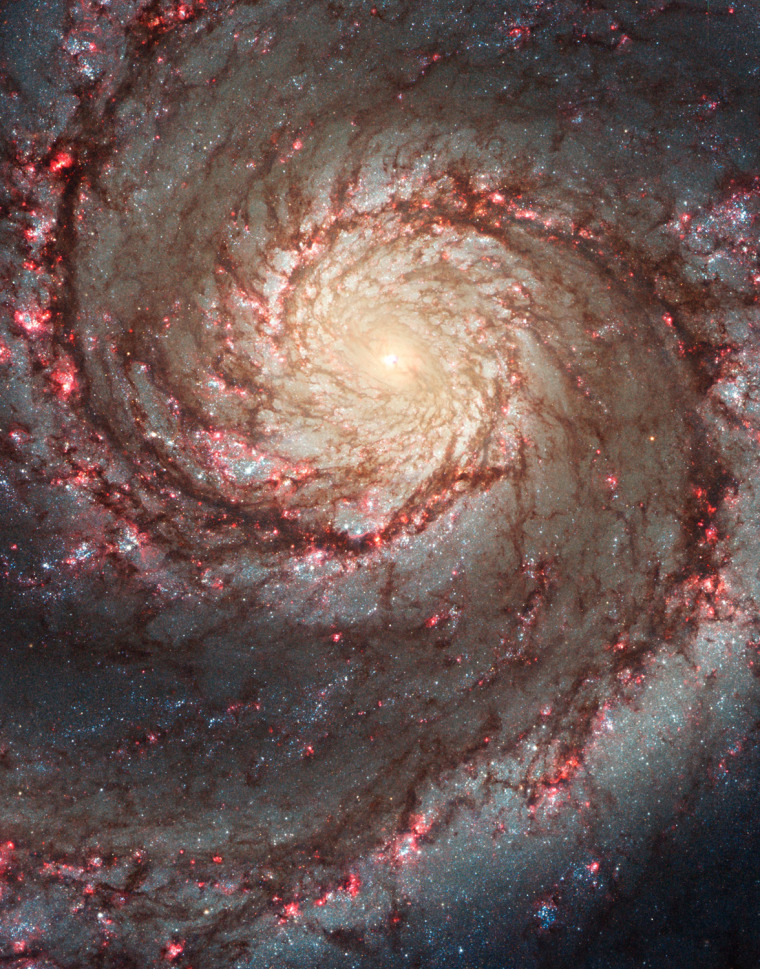
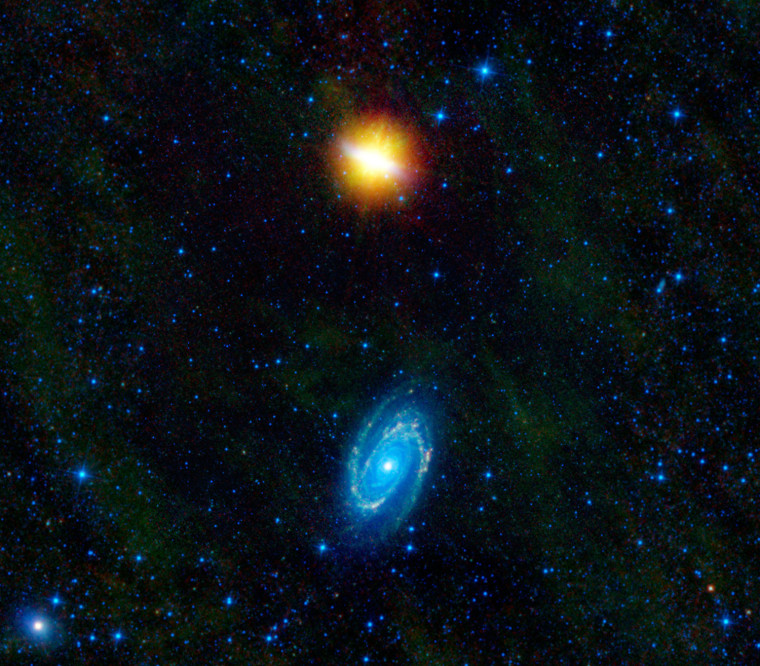
Dancing galaxies
This image from NASA's Wide-Field Infrared Survey Explorer, or WISE, features two stunning galaxies engaged in an intergalactic dance. The galaxies, Messier 81 and Messier 82, swept by each other a few hundred million years ago, and will likely continue to twirl around each other multiple times before eventually merging into a single galaxy. The relatively recent encounter triggered a spectacular burst of star formation visible in both galaxies. This infrared view was released on Jan. 13.
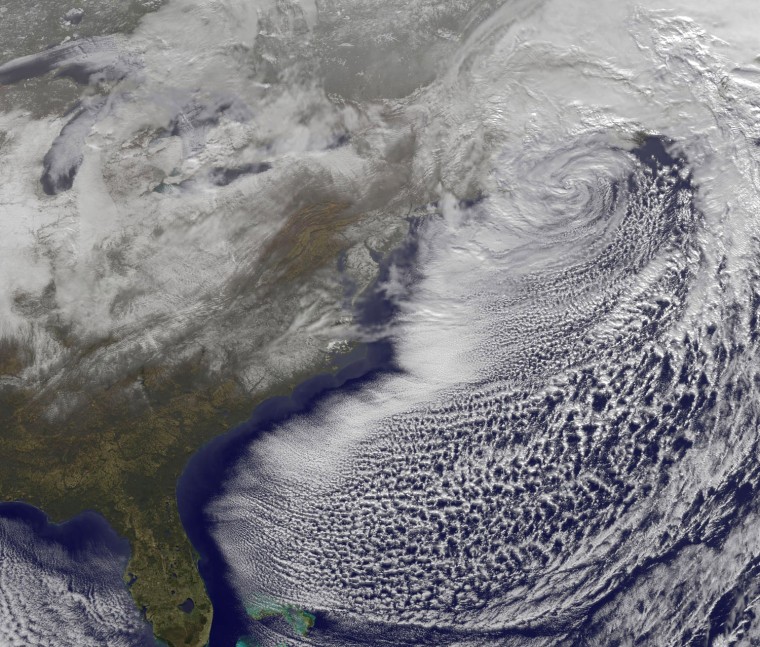
Storm seen from space
The GOES-13 satellite captured this visible-light image of a winter storm sweeping across America's East Coast on Dec. 27. Some of the snowfall can be seen over South and North Carolina, Virginia, Maryland, Delaware, eastern Pennsylvania, New Jersey and southeastern New York. Clouds obscure New England in the image.
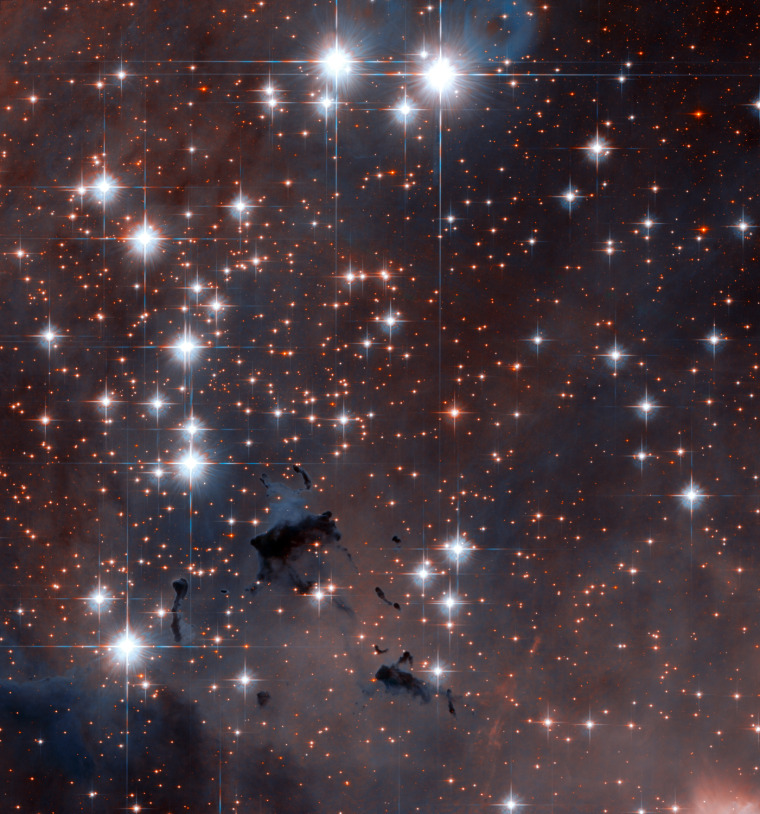
Sparkling Eagle
This Hubble Space Telescope image shows a dazzling star cluster in the well-known Eagle Nebula. The NGC 6611 cluster, which is 6,500 light-years from Earth, formed about 5.5 million years ago. It is a very young cluster, containing many hot, blue stars whose fierce ultraviolet glow makes the surrounding Eagle Nebula glow brightly. The open star cluster and the associated nebula together are also known as Messier 16. This stunner was the European Hubble team's "Picture of the Week" for Jan. 3.